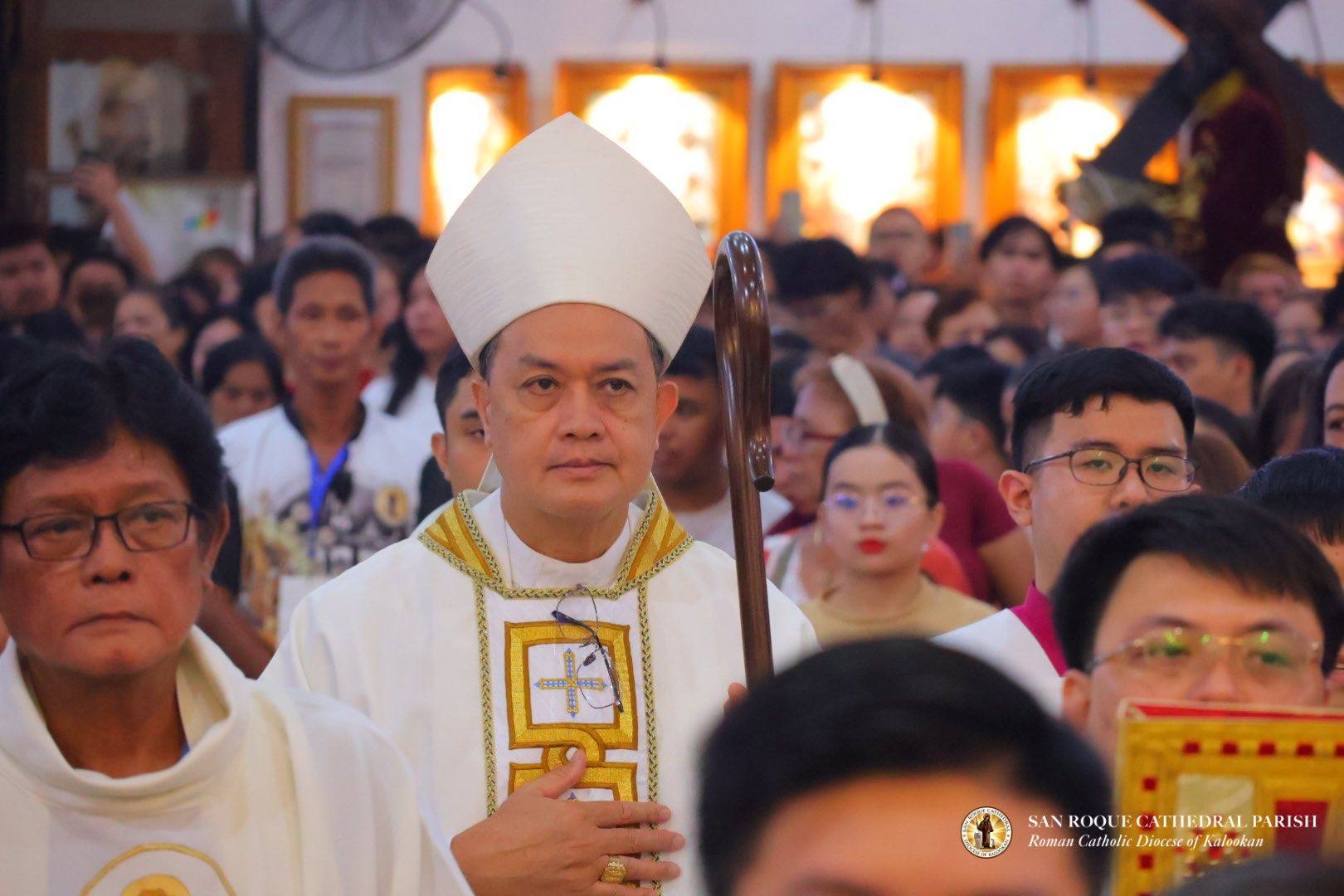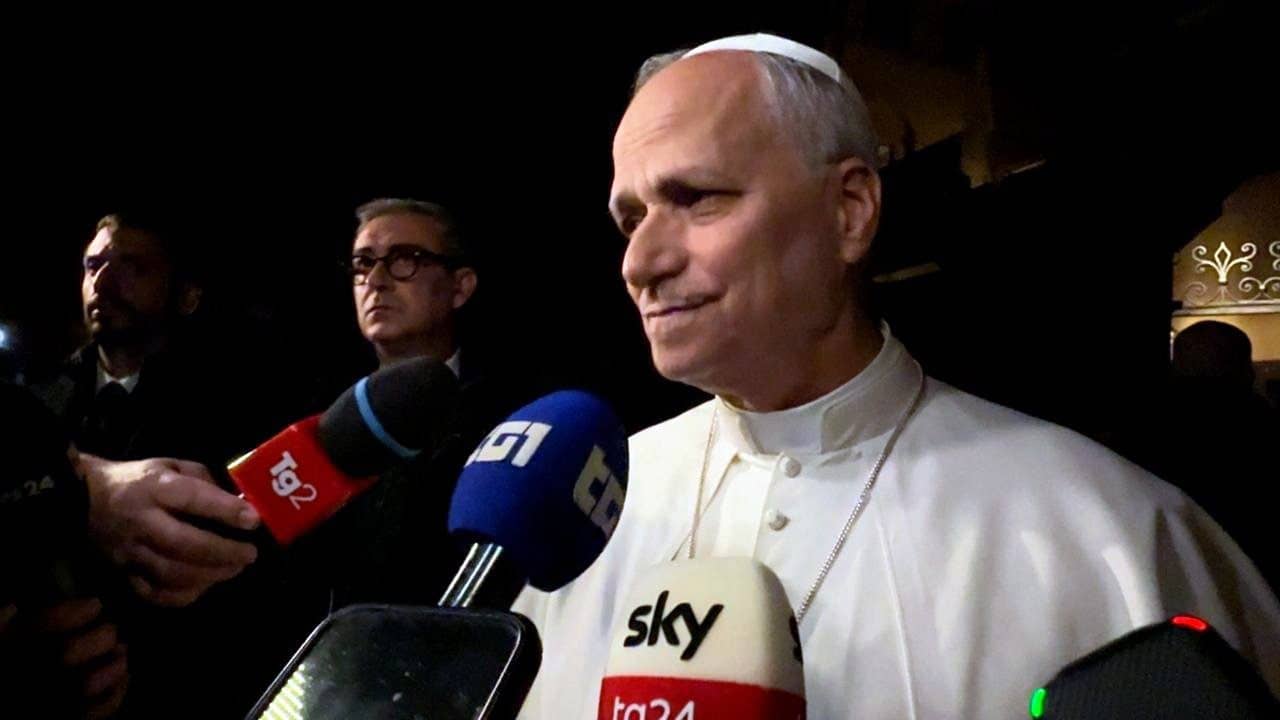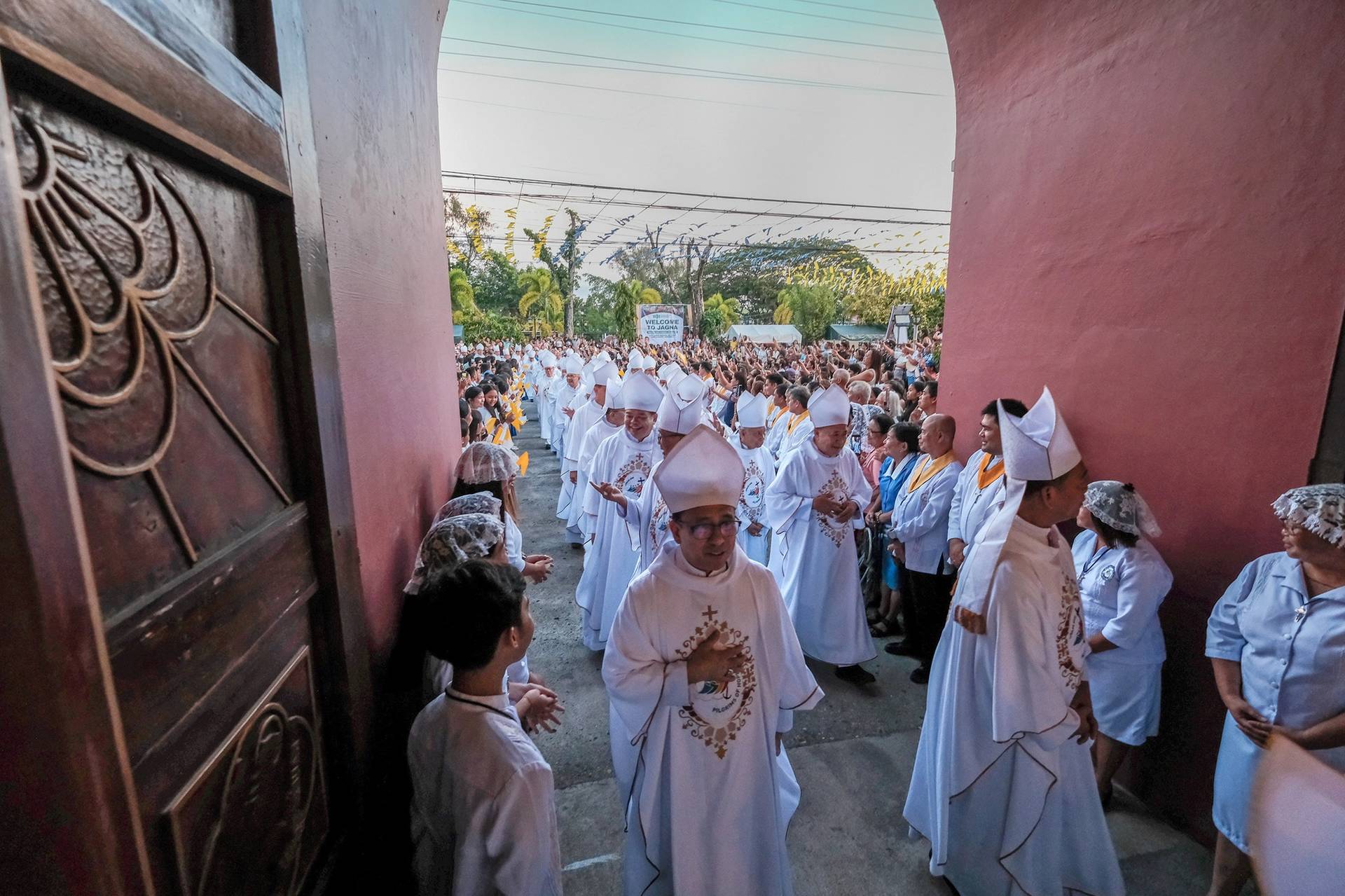Though it seems almost perverse to seek a silver lining in the rise of ISIS, nevertheless there actually is one. It has at least put an end to a longstanding climate of denial that violent anti-Christian persecution around the world is a genuine, and mounting, human rights menace.
The point is not that Christians deserve special privileges, or that they’re the only ones at risk. It’s rather that for a long time, the threats they face couldn’t penetrate Western consciousness, where the typical American or European is more accustomed to thinking of Christians as the authors of religious persecution rather than its victims.
Today, however, two-thirds of the world’s 2.3 billion Christians live in the developing world, where they’re often convenient targets for anti-Western rage – even though their churches have deeper roots in those places than most of their persecutors. Christians are also disproportionately likely to belong to ethnic and linguistic minorities, putting them doubly or triply in jeopardy.
All that has been true for some time, but the religious cleansing campaigns carried out by ISIS and its self-described “caliphate” has made anti-Christian hatred an utterly inescapable fact of life. The question is no longer whether it’s real, but what to do about it.
That’s where outfits such as the Catholic Near East Welfare Association (CNEWA) step in.
Founded by Pope Pius XI in 1926, CNEWA is an agency of the Vatican sustained primarily by the Church in the United States and Canada. Its first president was a legendary American Jesuit priest named Edmund Walsh, who was also the founder of the prestigious Georgetown University School of Foreign Service.
(As a footnote, Walsh was a fervent anti-Communist and confidante of Senator Joseph McCarthy, the architect of the “Red Scare” in the 1950s, proving that no accomplished life is ever without its ambiguities.)
CNEWA’s mandate is to support the Eastern churches in Catholicism, meaning the Catholic communities scattered across the Middle East, Northeast Africa, India, and Eastern Europe that draw on Eastern Orthodox traditions. In recent years, that’s made CNEWA a prime mover in delivering aid to persecuted Christians in some of the world’s leading hot spots.
Today, CNEWA is among the largest providers of aid to Middle Eastern Christians anywhere in the world. Though it’s a Catholic organization, it helps Christians of all sorts.
This week, CNEWA announced the release of grants totaling $686,000 to aid the Christian community in the Middle East, targeted at places that have absorbed the heaviest blows. They include three six-figure projects:
- $100,000 to rebuild churches and other Christian sites destroyed during anti-Christian riots in Egypt in 2013, the most violent pogrom directed at Egypt’s Coptic Christian minority in at least a century
- $150,000 to help parishes in Jordan cope with an influx of Christian refugees from Iraq by providing necessities like bedding, clothing, and food
- $100,000 to provide medical care for impoverished families in Syria, largely administered by religious orders of women and men in the country
Other recipients include a community of Sacred Heart nuns in Iraq that runs a home for the elderly and disabled, a community of St. Catherine of Siena sisters that lost its mother house in Mosul and several other convents, Dominican sisters in Jordan working with expectant mothers and children, and sisters in Lebanon working with poor Lebanese, whose needs often slip through the cracks today amid an influx of Iraqi and Syrian refugees.
Michael La Civita, a spokesman for CNEWA, told me this week that the new disbursements supplement the total of $6.8 million that the organization has committed to spending on aid to Christians in the Middle East this year.
Most of the money, he said, came from a special collection taken up by the US bishops last fall, after an ISIS offensive in July and August drove tens of thousands of Christians and Yazidis in Iraq into exile. That means the $686,000 moving to help persecuted Christians now is money given freely by individual American Catholics.
La Civita offered several assurances that the money will be used properly, including a complex review system to ensure transparency. For most Catholics, however, the real guarantee is another point made by La Civita – in many cases, the people running these projects are nuns.
“They make do with very little money, they’re enormously creative, and they do incredible things,” he said, calling religious women “the foot soldiers of the Church.”
Generations of Catholics around the world who have watched nuns in action know he speaks the truth.
The almost $7 million CNEWA will spend this year meets only a fraction of the need. La Civita points out, for instance, that an entire generation is now growing up in places such as Iraq, Syria, the Gaza Strip, and Egypt suffering post-traumatic stress disorder, and nobody has any idea yet what the price tag of dealing with it will turn out to be.
CNEWA is not the only Catholic organization on the front lines struggling to meet those needs. There’s Aid to the Church in Need, launched by a Dutch priest after World War II; Renovabis, in Germany, and L’Oeuvre d’Orient in France, founded in 1856.
What they all illustrate is that Catholics appalled by what’s happening don’t have to feel powerless. They may not be able to bring peace or resolve political stalemates overnight, but they can at least support committed people doing what they can to support the suffering.
A final lesson from Cardinal George
The Catholic Church in the United States lost a lion on Friday with the passing of Cardinal Francis George of Chicago, a former president of the US bishops’ conference and the intellectual leader of the conference during the late John Paul II and Benedict XVI years.
Within hours of the news breaking Friday, my e-mail box was stuffed with tributes pouring in from all over the place, one sign of the impact George had and the respect he earned across decades of leadership in the Church.
Here’s my own take on George’s life and legacy.
Here I’ll simply offer a personal note. A couple of years ago, I was in Chicago to give a talk on Catholic/Jewish relations named in honor of one of George’s predecessors, Cardinal Joseph Bernardin. (I joked at the time that in Chicago, “Bernardin lectures” are like pieces of the true cross, in that everybody seems to have one.)
With George present, I said from the stage that he was always my favorite interview, because every time I talked to him he said things that I knew (and he knew, too) were destined to provoke a reaction, and because he had such an active mind that whatever he said was original, thoughtful, and creative.
I went on to add that in my view, George was the “American Ratzinger,” in that he brought the same intellectual chops to the leadership class of the Church here that Cardinal Joseph Ratzinger, later Pope Benedict XVI, brought at the global level. I’ve repeated that description several times in other venues.
The last time I saw George, just before the installation of Archbishop Blase Cupich as his successor last November, he reminded me of that night and said he’d always wanted to say something to me. It turns out he wanted to ask me to stop calling him the “American Ratzinger,” because, in his modest assessment, “I’m not of that intellectual caliber nor of that intellectual accomplishment … I couldn’t have written the books he’s written.”
I knew full well in that moment that I was speaking to a dying man. I replied that I’d do almost anything else if he asked, but I couldn’t promise to stop calling him the “American Ratzinger” because watching George in action over the years persuaded me that on this one point, I was right and he was wrong.
Nevertheless, it’s fitting that my last experience of the man offered a lesson in humility and honest self-appraisal, because they were two qualities George had in spades, but which sometimes got lost in the controversies that swirled around him. (Much the same thing, of course, could be said of Benedict himself.)
Requiescat in pace, cardinal … you will be missed.
Pope’s possible Cuba stop
Pollsters and sociologists continue to debate whether there’s a discernible “Francis effect” on Catholicism in terms of measures such as Mass attendance and willingness to self-identify as Catholic.
One arena in which there’s no doubt that Francis has had an impact, however, is journalism, specifically the willingness of media organizations to invest in Vatican coverage. Recently, for instance, the Wall Street Journal hired veteran Rome correspondent Francis X. Rocca, a friend and colleague.
It paid off on Thursday, when Rocca broke the story that Francis is considering a stop in Cuba on the way to the United States in September.
Asking around among both Vatican officials and diplomats in Rome, one hears a good deal of caution about the idea. The complexities of a stop in Cuba, they say, are daunting, and it’s not just the logistical and security challenges. There’s also the risk that a stop could be manipulated by the government as a photo-op, sweeping human rights critics and political dissidents under the rug.
On the other hand, Francis has clearly demonstrated that he has a different sense of what’s possible, and advisable, than conventional wisdom would suggest.
If he does stop in Cuba, there would be a nice poetic arc to it. Last December, Francis played a key role in paving the way for the restoration of diplomatic relations between the United States and Cuba, so he would be symbolizing the push to heal the lingering Cold War divide by uniting his trips to the two countries.
Francis’ American advance team, however, may be nervous about that prospect for an entirely different reason.
The pontiff is coming to the United States just as the 2016 presidential race is heating up, with a flurry of long-rumored candidates making it official with announcements. Policy on Cuba is among the foreign policy issues some Republican challengers are expected to raise, perhaps especially Florida’s Marco Rubio.
Polls show that the roughly 2 million Cuban-Americans in the United States, heavily concentrated in Florida, are split on the recent move toward restoring relations, with older voters more likely to disapprove and younger voters welcoming it.
Depending on what Pope Francis says and does in Cuba, it could create a flash point just ahead of his arrival in the United States, one which might amount to a distraction and could color the way the trip is covered and experienced.
Of course, things could break the other way. If the stop in Cuba is styled as a success, it would offer a potent reminder of Francis’ political and diplomatic effectiveness just before he addresses a joint session of the U.S. Congress – offering the political class in America another reason to sit up and pay attention.
Fundamentally, the pontiff’s sky-high poll numbers in the States and his acclaim in the media stack the deck in his favor for his American debut. If you’re one of the people organizing the trip, however, the prospect of a stop in Cuba may be driving your blood pressure up just a bit these days.
A tightrope on financial reform
When the world gets around one day to framing the legacy of Pope Francis, undoubtedly all kinds of factors will loom large: His populist and maverick style, his moderate political and theological touch, the acclaim he’s garnered outside the Church, the controversies he’s let loose inside it, and on and on.
In the Vatican, all those things will have an echo, but the insider test of whether Francis will go down as a true reformer is likely to come somewhere else: If his much-vaunted financial clean-up operation actually succeeds, where so many others before it have failed.
This week, Francis made two personnel moves that illustrate the tightrope he’s walking vis-à-vis the traditional Italian power structure in the Vatican, which is both part of the problem and yet, inevitably, must also be part of the solution.
On Tuesday, the Rev. Luigi Mistò was named secretary of the Administrative Section of the Secretariat for the Economy, the new department headed by Australian Cardinal George Pell, the pope’s hand-picked financial reformer. The Rev. Mauro Rivella was tapped to take Mistò’s old job as head as secretary of the Administration of the Patrimony of the Apostolic See (APSA), an office that now has as its basic duty managing Vatican real estate.
Both represent the first senior Italians to be named to the pope’s financial team.
Up this point, most of the important players have been non-Italians. Aside from Pell, they include German Cardinal Reinhard Marx, coordinator of the policy-setting Council for the Economy; Joseph F.X. Zahra, a Maltese economist who’s the senior lay member of that body; Jean-Baptiste de Franssu, a Frenchman appointed last July to head the Vatican bank, and René Brülhart, a Swiss lawyer and anti-money laundering expert tapped under Benedict XVI and confirmed by Francis to head the Vatican’s financial watchdog agency.
The clear idea was to break with traditionally Italian ways of doing business, and to ensure that the Vatican draws upon the best financial talent around the world to drive the place toward best practices.
At the same time, the unavoidable reality is that the Vatican is located in Italy, most of its real estate holdings are in Italy, many of its important financial relationships are with Italian banks, and the Vatican’s financial prospects are heavily shaped by the economic, political, and regulatory climate in Italy.
As a result, Francis needs Italians on the team. At first blush, it seems he’s chosen wisely.
Before Mistò came to APSA, he was the head of the economic office in the Archdiocese of Milan, where he was seen as protégé of Cardinal Attilio Nicora, a financial expert who oversaw negotiations for a new concordat with Italy in 1984. Mistò has written a couple books about Church finance in Italy, and is admired as a classic technocrat.
Mistò is also from the Archdiocese of Milan, the financial capital of Italy, and yet another illustration of the old proverb: “The ways of the Lord are infinite, but often they depart from Milan.”
Rivella is a former under-secretary of the powerful Italian bishops’ conference CEI, so he’s well-connected. He’s also seen as a Pell ally, having recently contributed a chapter to the book “Co-responsibility and Transparency in the Administration of the Goods of the Church” (published in Italy by Aracne Editrice di Ariccia) that carried a foreword from the Australian prelate.
Proof that Francis got these choices right will come in the success or failure of the reform. For now, they’re examples of the tightrope Francis is walking — making this a sufficiently Italian-led enterprise to work, without making it so overwhelmingly Italian as to doom it from the start.
Examples of Catholic range
I’m on the road these days. I spoke on Friday in Orange County, California, at a conference on business and ethics sponsored by the Orange Catholic Foundation; I’ll speak on Monday to a seminar in Rome put on by the Catholic Health Association, and I’ll be in New York on Thursday, April 23, for a Catholic Relief Services event that also includes their president, Carolyn Woo, and Cardinal Timothy Dolan of New York.
Collectively, what those gigs bring home for me is the staggering range of activities in which the Catholic Church is a central player.
The Orange Catholic Foundation works with the Diocese of Orange to raise and manage funds, and is a premier vehicle for outreach to the business community. One primary mission is to support Catholic education, and it’s had remarkable success. The event I spoke at has been recognized by a local business paper as the No. 1 fundraising breakfast in Orange County – which is saying something – and may pass the $2 million mark this year in total collections.
The Catholic Health Association encompasses more than 600 hospitals and 1,400 long-term care and other health facilities in all 50 states, making it the largest group of nonprofit health care providers in the nation. Every year, one in six hospital patients in America is cared for by a Catholic hospital, and CHA brings them together.
Catholic Relief Services delivers humanitarian aid, both emergency and long-term, to more than 85 million people in 101 countries on five continents. In essence, it’s the overseas development arm of the US Catholic bishops. The organization is led by the remarkable Woo, an emigrant originally from Hong Kong and a genius at enlisting business leaders in anti-poverty efforts.
Those groups are in addition to the Catholic outfits listed above dedicated to supporting suffering Christians and other victims of religious persecution in various parts of the world.
What all these organizations symbolize is the way the Church’s teaching and ministries have become thoroughly interwoven in every aspect of social life. They underscore that for untold legions of Catholics in the United States and around the world, the faith means something far more than simply showing up for Mass on Sunday.
It’s every bit as much about what you do the rest of the week, and in ways large and small, plenty of American Catholics are doing it.













